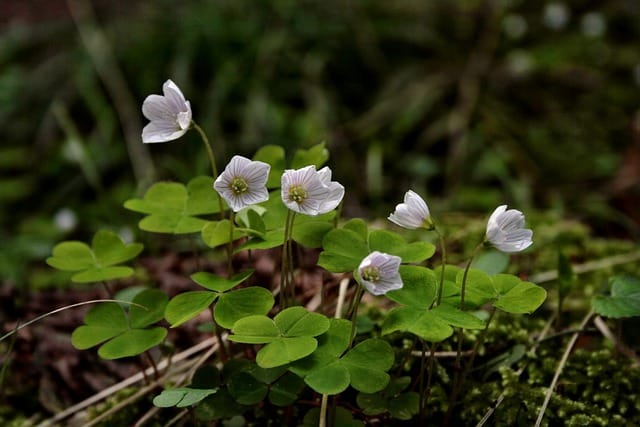How to grow Sorrel
Sorrel, also known as Rumex acetosa, is a leafy herb that is widely cultivated for its tangy flavor and nutritional benefits

In this article:
Introduction
Sorrel, also known as Rumex acetosa, is a leafy herb that is widely cultivated for its tangy flavor and nutritional benefits. It is a hardy plant that can be easily grown in home gardens, making it a popular choice among herb enthusiasts. This article will provide you with a comprehensive guide on growing, maintaining, and utilizing sorrel in your own garden.
What is Sorrel?
Sorrel belongs to the Polygonaceae family and is native to Europe and parts of Asia. It is a perennial herb that produces bright green, arrow-shaped leaves with a distinct lemony or sour taste. Sorrel is known for its high levels of vitamin C, iron, and various other antioxidants, making it a valuable addition to any diet.
Varieties of Sorrel
There are several different varieties of sorrel, each with its own unique characteristics. The most common types include:
- Common Sorrel (Rumex acetosa): This is the most widely cultivated variety, known for its acidic and tangy taste.
- French Sorrel (Rumex scutatus): This variety has smaller leaves and a milder flavor compared to common sorrel.
- Broad-leaved Sorrel (Rumex obtusifolius): This variety has larger leaves with a less acidic taste and is often used in salads.
Growing Conditions
Sorrel thrives in cool climates and prefers partial shade, although it can tolerate full sun in cooler regions. It grows well in USDA hardiness zones 4-8. Ensure your chosen planting location offers well-draining soil and receives at least 4-6 hours of sunlight per day. Avoid planting sorrel in areas prone to frost or extreme heat.
Planting Sorrel
Sorrel can be propagated from seeds, seedlings, or root divisions. It is recommended to start seeds indoors 4-8 weeks before the last frost, as sorrel can take longer to germinate. Transplant seedlings when they are around 4-6 inches tall, spacing them approximately 12-18 inches apart. Ensure the soil is moist before planting, and gently cover the seeds or roots with a thin layer of soil.
Soil Preparation
Prior to planting sorrel, it is crucial to prepare the soil properly. Sorrel thrives in slightly acidic to neutral soil, with a pH level between 6.0 and 7.0. Till the soil to a depth of 6-8 inches and remove any weeds or rocks. Incorporate organic matter like compost or well-rotted manure to improve soil fertility and drainage.
Watering and Fertilizing
Sorrel requires regular watering to keep the soil consistently moist, but avoid excessive watering, as it can lead to root rot. Water the plants deeply once a week or more frequently if the weather is exceptionally hot and dry. Apply a balanced organic fertilizer, such as compost or aged manure, during the growing season to promote healthy growth.
Pruning and Maintenance
To maintain a healthy sorrel plant, it is essential to remove any yellowing or damaged leaves regularly. This will encourage new growth and help prevent the spread of diseases. Additionally, cutting back the flowers before they go to seed will promote the growth of foliage. Mulching around the base of the plants can help suppress weeds and retain soil moisture.
Dealing with Pests and Diseases
Sorrel is generally a pest-resistant herb, but it can occasionally fall victim to diseases like powdery mildew or pests such as aphids and slugs. To prevent and manage these issues, promote proper airflow by providing adequate spacing between plants, avoid overwatering, and promptly remove any affected leaves or plants.
Harvesting Sorrel
The leaves of sorrel can be harvested from early spring through late fall, depending on the climate. Harvesting young leaves will provide the best flavor and tenderness. Simply cut the leaves with clean scissors or pinch them off at the base. Leave a few leaves on each plant to ensure continued growth.
Culinary Uses of Sorrel
Sorrel is a versatile herb commonly used in various culinary preparations. Its tangy flavor adds a unique zest to salads, soups, sauces, and even beverages. It pairs well with fish, poultry, and eggs. The leaves can be enjoyed raw in salads or cooked in dishes like sorrel soup or sorrel pesto. Experiment with different recipes to discover your favorite ways to incorporate sorrel into your meals.
Storing and Preserving Sorrel
Fresh sorrel can be stored in the refrigerator, loosely wrapped in a plastic bag, for up to a week. To preserve a larger harvest, sorrel can be frozen, dried, or turned into flavored vinegar. Freezing the leaves in an airtight container or blanching and freezing them in ice cube trays are popular methods of long-term storage.
Conclusion
Growing sorrel in your garden allows you to enjoy the freshness and tangy taste of this nutritious herb all year round. By following the proper planting, care, and harvesting techniques, you can cultivate robust sorrel plants and enhance your culinary experience with its vibrant flavor.
